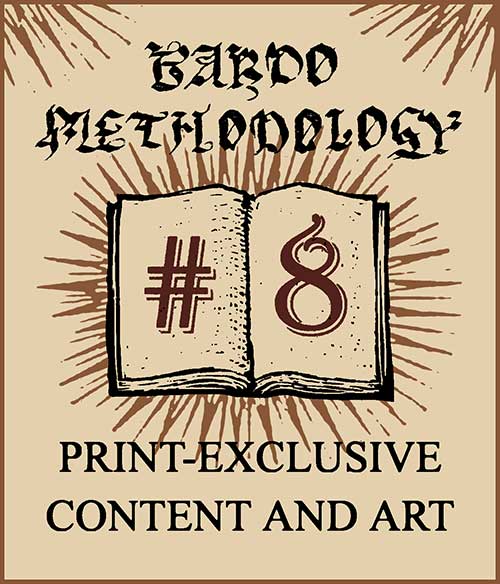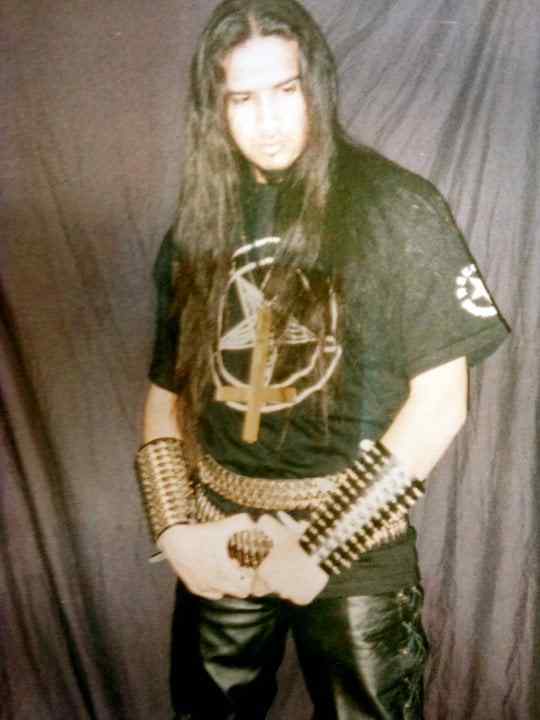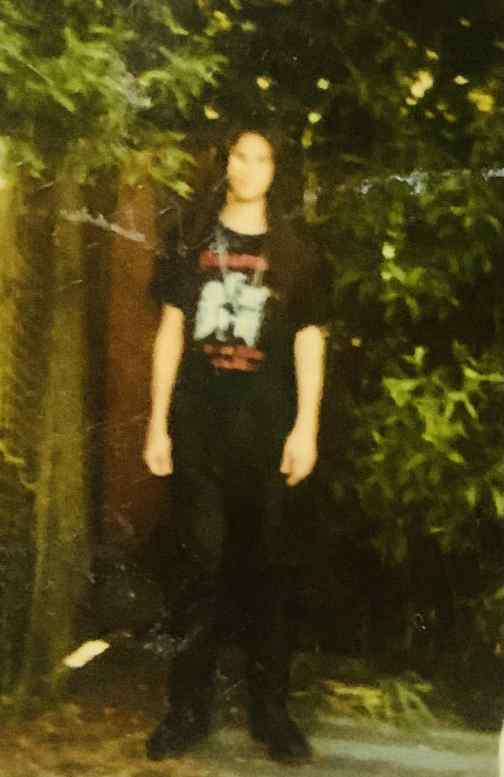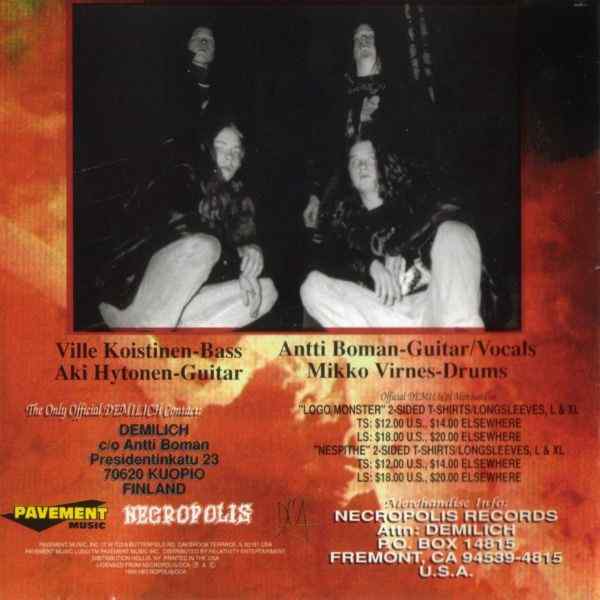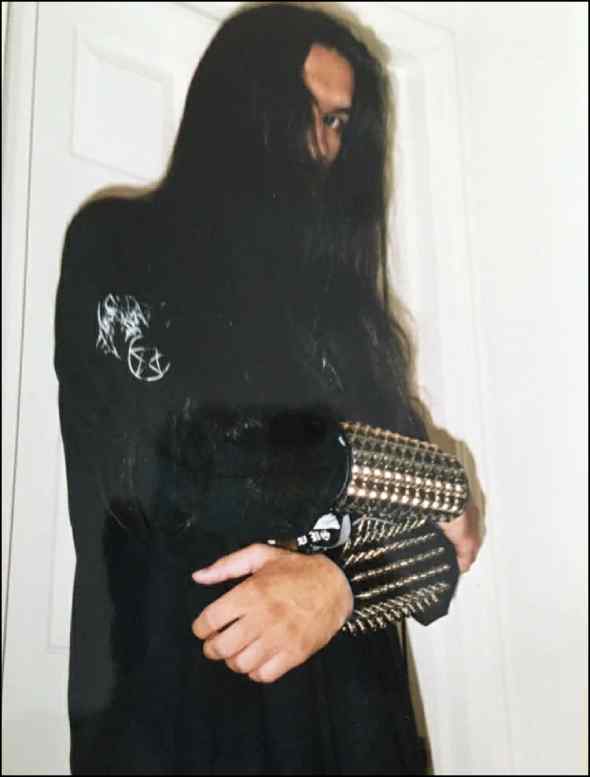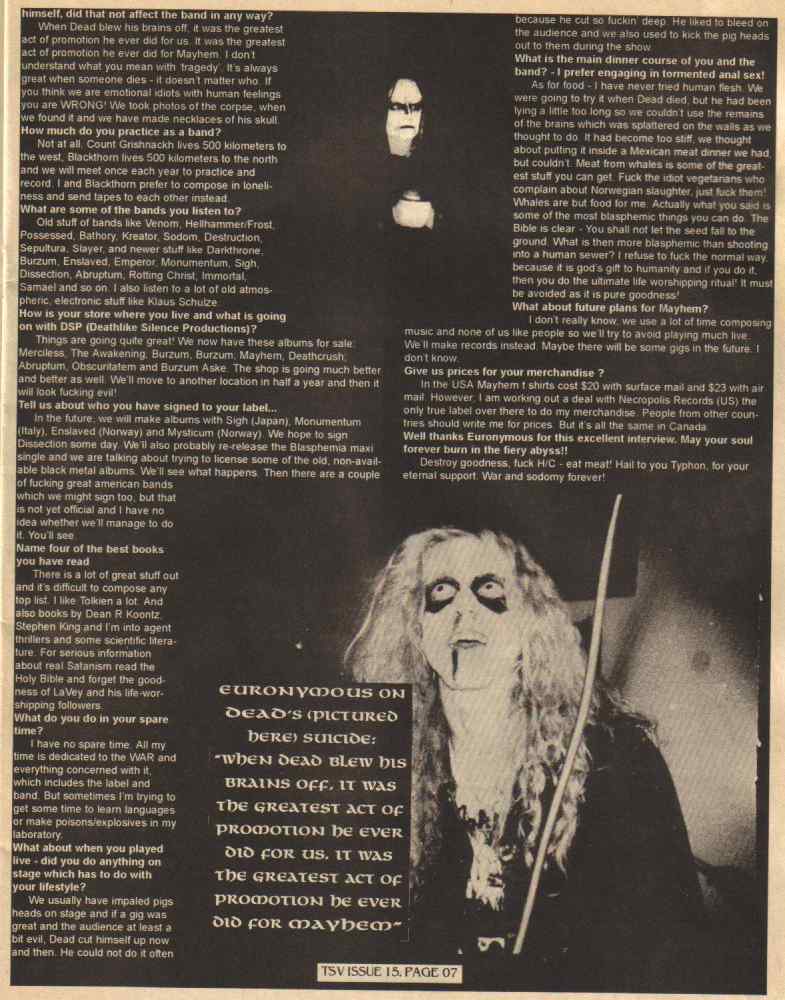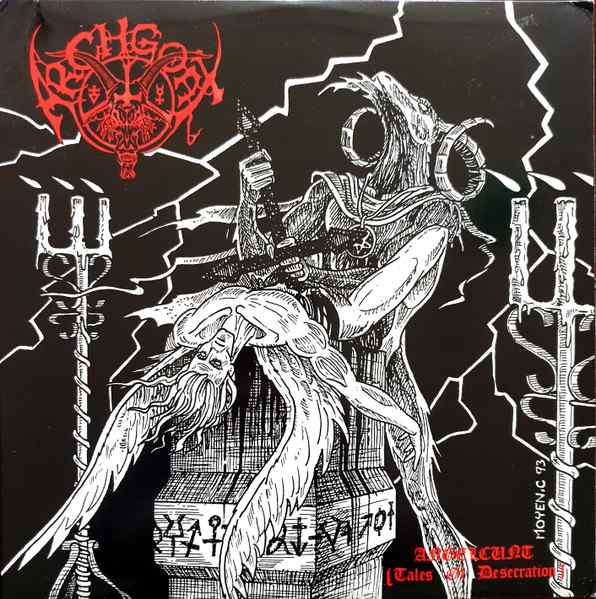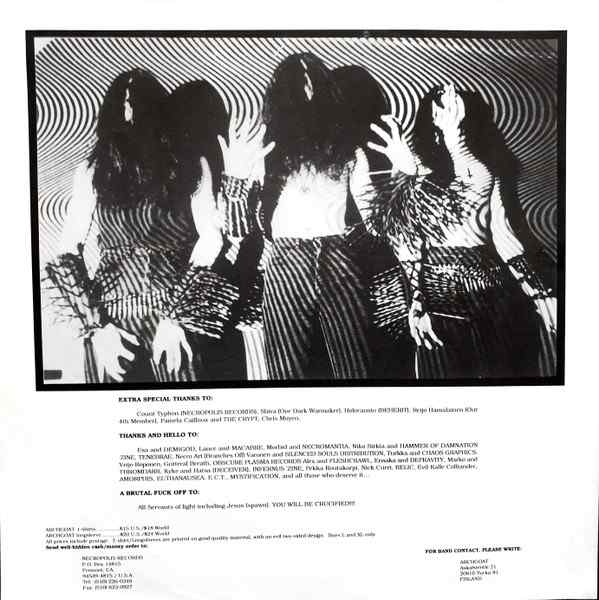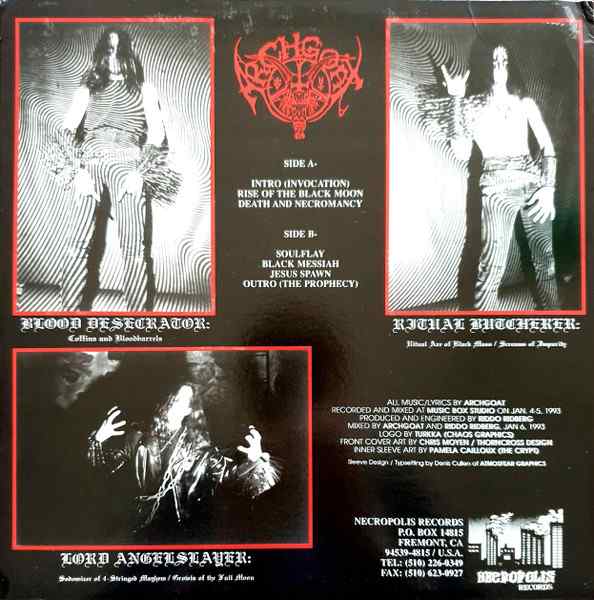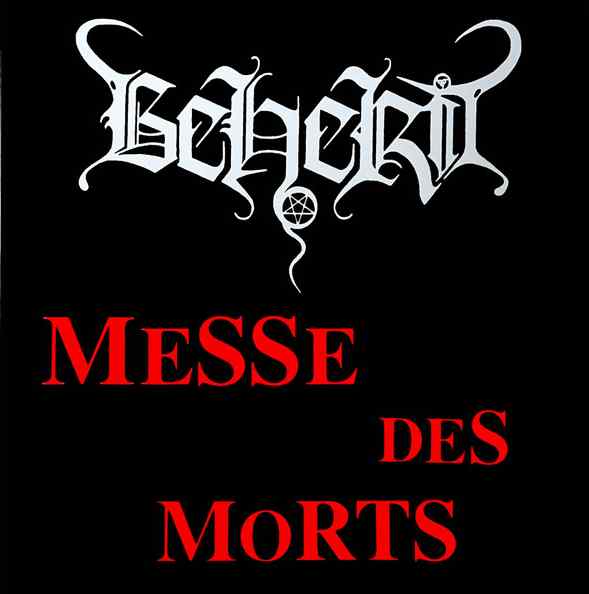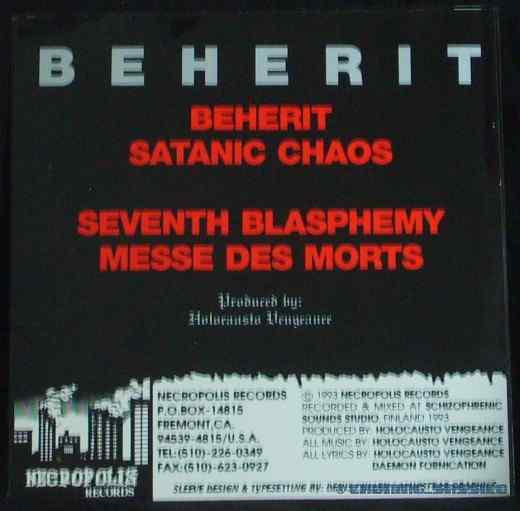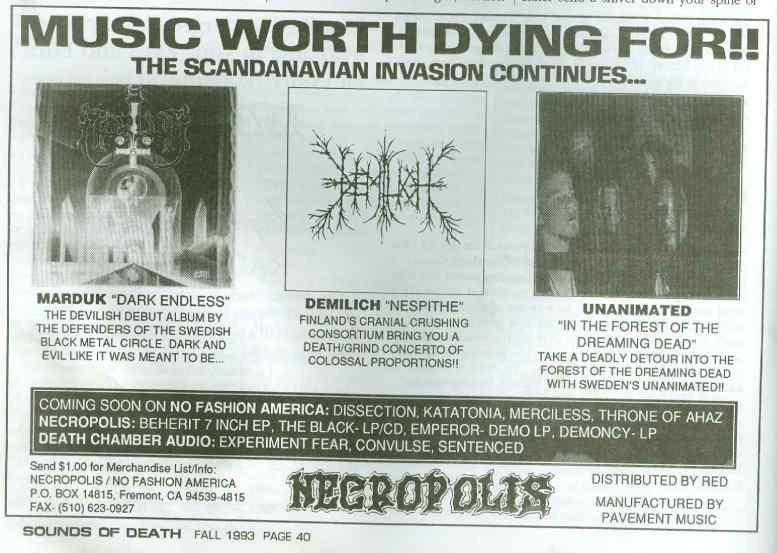Necropolis Records II
2025-10-08
by Niklas Göransson
What began as blood-sealed letters now demanded incarnation. Through Archgoat’s savage liturgy, Beherit’s alchemical rites, and The Black’s Satanic scripture, Necropolis took flesh — a sanctuary for those who saw salvation in the flames.
PAUL TYPHON: During the early ‘90s, the underground felt connected; there wasn’t yet as much division between death and black metal. Part of it might’ve been because Euronymous’ first D.S.P. release was MERCILESS’ “The Awakening” – a Swedish death/thrash album – which really blurred the lines.
In 1991, at age sixteen, Paul launched Necropolis – a fanzine devoted to death and black metal. The publication soon drew international attention, which helped him establish a European network of like-minded young underground fanatics.
PAUL: MAYHEM embodied a sense of danger you couldn’t find anywhere else. Sure, MORBID ANGEL, NECROVORE, and N.M.E. had demos with a similarly raw menace, but the stories around MAYHEM – Dead’s suicide and all that followed – were far more compelling.
A local underground metalhead known as Shiva became a black metal mentor of sorts, putting Paul in touch with figures like MAYHEM guitarist Euronymous and Metalion of Slayer Mag.
PAUL: Shiva would write letters by candlelight, cut himself and sign them in blood, then use dripping wax to seal the envelope. That’s why there was so much trust and respect between him and the bands: he lived the lifestyle fully. This aligned with my vision of extreme metal – I couldn’t stand the pivoting to political or environmental messaging.
By then, much of the Bay Area thrash scene had started leaning into musical technicality and social commentary, reflecting a growing push for mainstream legitimacy.
PAUL: I get that artists grow, but the metal I craved had to be extreme, blasphemous, and evil. For Euronymous, it went beyond music – he was building a movement. Once Shiva and I were part of that network, the next step was figuring out how to get more involved.
This set the stage for Paul’s next step: turning his editorial platform into a record label. Frustrated that none of the established operations showed interest in Finnish death metal act DEMILICH, he resolved to sign them himself.
PAUL: Shiva loved their “The Four Instructive Tales… of Decomposition” demo, and so did I. The performance, the double-bass drumming, the riffs – everything – was amazing. Extreme death metal, but also incredibly technical and way more intense than the melodic Swedish stuff.
Paul originally planned a straight reissue of the demo, but the band insisted on re-recording the material for a full-length. With no prior label experience and only determination to guide him, Paul teamed up with Eric Cerda of Death Chamber Audio to co-finance what became Necropolis Records’ first undertaking.
DEMILICH entered the studio over Christmas ‘92 to record “Nespithe”, upon which all Paul’s label hopes and dreams rested.
PAUL: The studio bill was surprisingly cheap – probably around $1,500. I still don’t know how they managed to pull that off. Their first mix sounded too quiet; I wanted a loud, piercing production so the music would hit hard from the first second. I can’t remember if we had it remastered or just asked them to boost the volume.
Necropolis Records debuted with DEMILICH’s “Nespithe” on February 8, 1993. Paul split the studio costs with Death Chamber Audio, then handed the cassette and CD editions to Pavement Music – a US rock and metal label distributed by Zoo/B.M.G. – in what’s known as a P&D deal.
PAUL: Our pressing-and-distribution agreement meant that Pavement fronted the manufacturing cost, handled production logistics, and distributed “Nespithe” through mail-orders and record shops. Holding the CD in my hands felt great… but communication and reporting were limited, making it difficult to track sales performance.
It sounds a bit anticlimactic to put out your first album and then have no idea how it was received.
PAUL: Mm. I threw that deal together mostly to get the album into shops, which is exactly how a lot of American bands who later cited DEMILICH as an influence discovered it. If you sit down with “Nespithe”, the sheer number of riffs and layers is incredible. People found DEMILICH so unusual, but everyone got hung up on the vocals.
The booklet states, ‘absolutely no effects were used on the vocals in any way’. I’m wondering if this might not have been to their detriment; I’ll freely admit I can’t handle that ghastly toad-burping.
PAUL: I don’t think anyone could handle them at first. Antti inhales to make that insane sound – and he can do it naturally, which I’d never heard before or since. The funny thing is how now, thirty years later, DEMILICH shows up in Rolling Stone and people call “Nespithe” one of the best death-metal records ever.
By then, Necropolis Records had approached a very different Finnish band: ARCHGOAT. The introduction came through Shiva’s longtime pen-pal, BEHERIT mastermind Nuclear Holocausto Vengeance.
PAUL: Shiva already had the ARCHGOAT demo (“Jesus Spawn”), but it was Holocausto who pushed us to sign them. I loved that stark transition – from the technical complexity of DEMILICH to full-on BLASPHEMY-sounding bestial black metal. I wanted to put out something unhinged and dark while keeping the Finnish connection alive.
In early 1993, ARCHGOAT recorded a mini-LP titled “Angelcunt (Tales of Desecration)” at Music Box Studio in Turku. Unlike “Nespithe”, Paul decided to fund and press the release himself.
PAUL: ARCHGOAT seemed like the perfect choice for the first official Necropolis title. This time, the financing came down entirely to me; Shiva was always very supportive, of course, but he wasn’t about to pull money out of his bank account and wire it to a studio in Finland.
Instead of cash infusions, Shiva became part of the label budget. According to a later Necropolis interview in Septic ‘Zine, he was arrested around this time and had to be bailed out. This, in turn, caused delays with the studio payment for THE BLACK’s “The Priest of Satan”, recorded in spring 1993.
PAUL: That whole period is a little foggy now – but yeah, Shiva had some personal challenges going on. I don’t like talking about people who aren’t present; let’s just say this briefly disrupted our production schedule, but we got it resolved together with the band.
In October of the previous year, the Swedes – then known as THE BLACK FLAME – released a demo titled “Black Blood”. Their founder and creative force, Make Pesonen, was also the drummer of ETERNAL DARKNESS, a death metal band from Eskilstuna who’d been in talks with Necropolis.
Notably, the “Black Blood” demo also had DISSECTION’s Jon Nödtveidt on vocals.
PAUL: Jon and I began corresponding around the time I got to know Swedish bands like AT THE GATES and DARK TRANQUILLITY. He sent me the DISSECTION demo, “The Grief Prophecy”, and it blew my mind. There was a tonne of back-and-forth correspondence, which I still have in storage somewhere.
DISSECTION originally hailed from Strömstad on the west coast of Sweden – but by ‘92, Jon Nödtveidt lived in Eskilstuna, enrolled in the arts programme at an upper secondary school. Following “Black Blood”, THE BLACK FLAME shortened their moniker to THE BLACK, with Jon also assuming guitar duties.
PAUL: Jon called me, said they were preparing a full-length, and suggested a Necropolis collaboration. Shiva was already in touch with Make, so it all lined up naturally. Jon definitely acted as the catalyst – he’d started a mail order and even sent me early DISSECTION and THE BLACK shirts.
During his time in Eskilstuna, Jon operated a short-lived mail order – a Swedish branch of Euronymous’ Helvete.
PAUL: They were building their own scene in Sweden. Jon would regularly visit Euronymous in Oslo, which also strengthened Necropolis’ connections. The influence coming out of Scandinavia felt real; the scene needed something bigger to rally around, and black metal was it.
PAUL: When you’ve built a network through years of correspondence, it’s easier for mystique to thrive. Receiving handwritten letters from Scandinavia was far more evocative than just picturing someone in rural Montana driving a truck <laughs>. And the stories going around only deepened the magic. When did the Kerrang! piece run?
Kerrang!’s notorious The Ugly Truth About Black Metal article appeared in their March ‘93 issue.
PAUL: Suddenly, everyone was paying attention. But Shiva and I already knew most of the key players, which gave us the inside track. Euronymous had grand ambitions for Deathlike Silence, which I found inspiring. He and I were discussing Necropolis taking on the role of D.S.P.’s US branch.
Given that Euronymous – courtesy of his hardline Stalinist principles – preferred bringing MAYHEM to places like Turkey and the DDR rather than Western countries, the very notion of a ‘Deathlike Silence America’ sounds almost flabbergasting.
PAUL: Those principles were always there, but he also felt expanding was the most effective way to get his vision out into the wider world. By then, our letters had become deeper, more meaningful exchanges beyond just music. He must’ve realised that finding people on his wavelength outside Norway could help spread black metal ideology.
According to Faust’s liner notes in ‘Nordic Metal…’, you and Euronymous also discussed a Deathlike Silence compilation.
PAUL: Yes, the idea was to create a kind of ‘Black Circle’ compilation, with him deciding which bands to feature – certainly all the D.S.P. artists, plus whoever else he wanted to include. We were going to blatantly call it ‘Black Metal Mafia’ or something like that. Shiva also took part in those conversations.
How far did your D.S.P. collaboration plans go?
PAUL: Euronymous wrote me basically saying, ‘Okay, let’s move forward with this. I’m going to send you everything I have.’ I still think about that line. I found his willingness to just hand everything over – demos, DAT tapes, artwork, the lot – a bit strange. Some say he was planning to get out, but I don’t know.
Alongside their business dealings, Paul had also conducted a MAYHEM interview initially meant for the third issue of his fanzine. Soon after, in August 1993, Euronymous was stabbed to death by BURZUM’s Varg Vikernes.
PAUL: I want to say I first heard the news from Jon of DISSECTION or Morgan (MARDUK) – either in a letter or over the phone. I definitely remember them mentioning rumours about Euronymous being dead, or that they’d read something in the Swedish newspapers.
Once the victim’s identity was established, the case became first-page tabloid news in Sweden. At first, Norwegian law enforcement worked under the theory that a rival Swedish black metal faction had carried out the murder.
PAUL: Word spread quickly after that. I was expecting the D.S.P. material he’d promised, but then everything just stopped. When confirmation of Euronymous’ death finally came, it left me in shock. I kept asking around, ‘What happened? Does anybody know?’ Total disbelief.
Had you been in contact with Varg Vikernes?
PAUL: This is where the timelines get messy. Varg and Shiva had corresponded a lot, and I eventually started writing to him. We stayed in touch as everything unfolded – primarily out of professional curiosity and shared musical interests. I know Jon Thorns was in contact with him as well.
Jon ‘Thorns’ Jamshid of Petrified ‘Zine and Full Moon Productions had conducted a BURZUM interview with Varg Vikernes in mid-1993 – just months before Euronymous’ murder.
Jamshid’s position – seeing black metal as a worldview validated through action – contrasted with the growing animosity toward BURZUM among Euronymous’ allies. Despite the turmoil in Norway, Jon helped circulate Vikernes’ writings, lyrics, and official merchandise through his fanzine and label ventures.
PAUL: Jon had a different perspective on the situation, whereas I was probably closer to the camp of Euronymous loyalists. I remember IT from ABRUPTUM – another long-time contact of Shiva – driving a lot of the anti-BURZUM sentiment, but Varg and I never had a falling out.
Meanwhile, Paul prepared to release Necropolis’ second title, ARCHGOAT’s “Angelcunt (Tales of Desecration)”. Clocking in at 13:33, the EP had to be pressed on a twelve-inch. It finally appeared in October 1993 – ten months after the recording.
PAUL: As Jon Thorns told you, this stuff was really hard to figure out back then. It took a while, but I eventually found a plant that handled vinyl, lacquer masters – the whole process. We sent them the DAT tape ARCHGOAT provided; they made a test pressing for us to approve before the full run.
Did the band complain about the delay?
PAUL: Not as I recall; we didn’t correspond much with ARCHGOAT. I still have their letters – they basically sent the master and said, ‘Here, press this.’ So, that’s what we did. Then I got it distributed through the usual suspects.
“Angelcunt…” has since become a classic, with countless reissues – but I’m guessing this was a gradual development?
PAUL: Correct, it took several years to move that first run. In the beginning, “Angelcunt…” was mostly loved by us – Shiva and I were blown away by the performance, the drumming, everything. Some of my contacts actually gave me grief for it; the divide between the Finnish and Norwegian black-metal scenes still ran deep.
The early Norwegian scene was known for enforcing its strict definition of who could be considered black metal. Characters like BURZUM’s Varg Vikernes disliked the sacrilegious, almost punk-fuelled imagery of certain Finnish acts. IMPALED NAZARENE fired back by printing ‘No orders from Norway accepted’ on their debut, “Tol Cormpt Norz Norz Norz…”, released in 1992 by Osmose Productions.
PAUL: Hervé (Osmose) didn’t care about scene politics; he worked with anyone whose music he believed in, and that attitude inspired me. Putting ARCHGOAT out as our very first release – the moment Necropolis really took shape – definitely ruffled some feathers.
December 1993 saw a third Finnish collaboration – “Messe Des Morts”, a seven-inch by BEHERIT.
PAUL: Holocausto approached us, ‘Hey, I recorded this – can you put it out?’ Compared to ARCHGOAT, “Messe Des Morts” came together pretty fast. Seven-inch records were easier to handle and much cheaper to press and ship. Shiva and I had always wanted to release one, and we couldn’t have asked for a more suitable band.
“Messe Des Morts” surfaced only two months after BEHERIT’s magical debut album “Drawing Down the Moon”. Considering the EP’s minimalist, lo-fi production and simple material – drum machine, no bass – I wouldn’t be surprised if some fans were a little dismayed at first.
PAUL: Yeah, a lot of people found it strange. Shiva loved the experimentation, thought “Messe Des Morts” was brilliant, and believed BEHERIT could do no wrong. Holocausto didn’t want any photos on the release, so we ended up just using the logo and a simple, almost primitive font.
It’s pretty hideous – didn’t you try to rectify it?
PAUL: As big BEHERIT fans, Shiva and I were fully behind whatever Holocausto wanted to do. In hindsight, that stripped-down approach really fit the EP and showed a different side of his creativity. Over time, it’s become a cult release – just like “Angelcunt…”.
Earlier in 1993, ARCHGOAT returned to the studio to record what was intended as their debut full-length for Necropolis Records. Despite completing the album, they ultimately decided against releasing it.
PAUL: Hmm. I’m not sure what happened there; it definitely sounds familiar, but I’d have to go back and check our correspondence. The guys later claimed Necropolis upset them, but as far as I remember, there weren’t any disputes at that point. I had the impression they’d split up, or something was going on behind the scenes.
According to a 2025 interview with The Tampa Morgue, ARCHGOAT disbanded in late ‘93 – around the time “Angelcunt (Tales of Desecration)” was released – after its members were called into mandatory Finnish military service.
ARCHGOAT then disappeared into a decade of obscurity, while their debut album remained unreleased – according to the band, due to a falling-out with Necropolis Records.
PAUL: Again, I never felt any tension at the time. Maybe it’s something they said afterwards to justify the long break. Over time, people tend to build their own version of events, which isn’t always accurate – on either side. Regardless, by then I’d shifted focus to THE BLACK and was working on licensing deals with No Fashion.
Parallel to Necropolis’ homegrown releases, Paul was scouring his European network for potential partners. He found one in Tomas Nyqvist, editor of Swedish fanzine Putrefaction and head of No Fashion Records.
After two 1992 releases by BESTIAL SUMMONING and FESTER, Nyqvist went on to sign a near who’s-who of Swedish black metal: MARDUK, UNANIMATED, DISSECTION, and KATATONIA.
PAUL: Despite my relative inexperience, I knew I couldn’t approach Pavement with just one record. Since Necropolis didn’t have many releases yet, I asked Tomas if he wanted in on the deal. So, “Dark Endless” (MARDUK) and UNANIMATED’s debut went into our distribution agreement and were supposed to be sold in US stores alongside DEMILICH.
log in to keep reading
The second half of this article is reserved for subscribers of the Bardo Methodology online archive. To keep reading, sign up or log in below.

